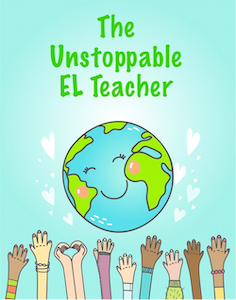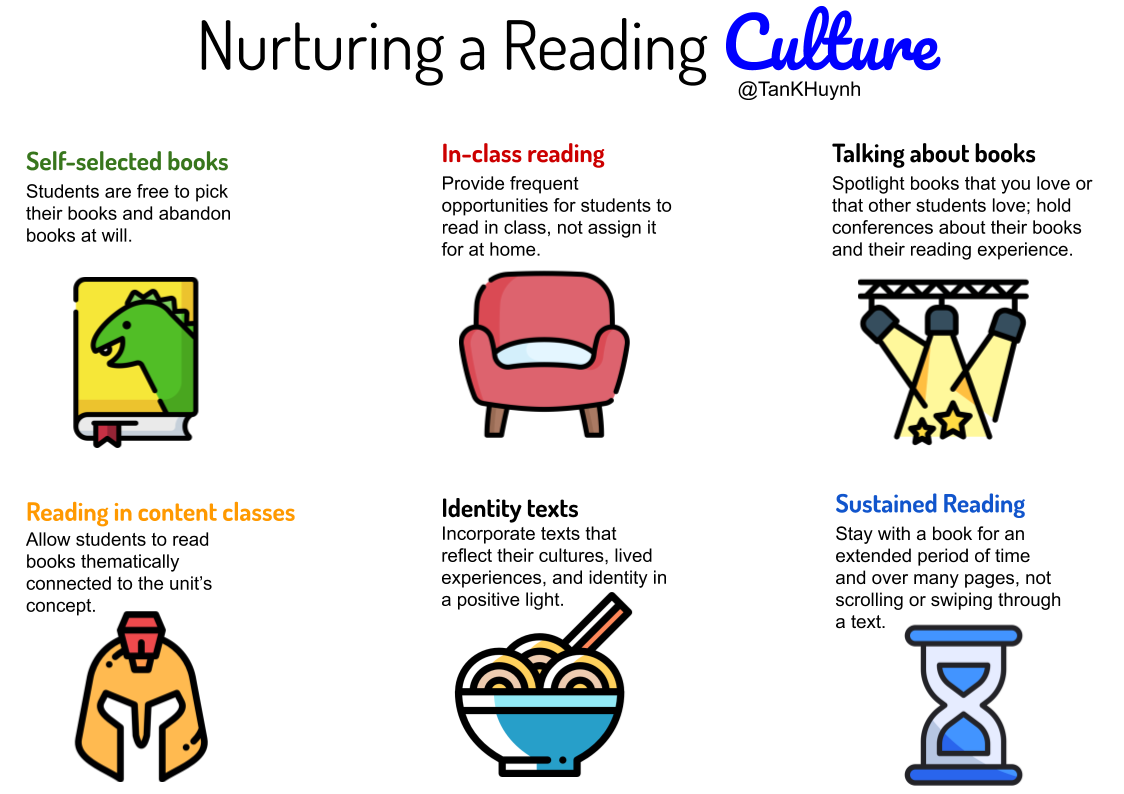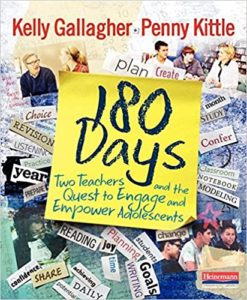Penny Kittle: Nurturing Readers for a Lifetime
A MiddleWeb Blog
By Tan Huynh
In my practice, nothing is more powerful than having students fall in love with reading. If I can get students to love reading, they will:
- Become better readers (Gallagher, 2009)
- Perform better on standardized assessments (The National Endowment for the Arts, 2004)
- Develop an extensive vocabulary (Wu & Samuels, 2004)
- Use more complex writing structures (Culham, 2011)
- Exercise greater emotional intelligence (Bishop, 1990)
This article summarizes the key points celebrated author and English teacher Penny Kittle shared during her podcast interview on how teachers can nurture a reading culture.
Our conversation was largely based on her ASCD article entitled “Let Them Read, Please” and her co-authored book with Kelly Gallagher, 180 Days.
Self-selected books
A reading culture takes root when students are allowed to select their books based on interests (Ivey & Broaddus, 2001; Reis et al., 2007). Love of reading does not blossom, conversely, when students are forced to read books only at their reading levels. A reading life hatches from student choice and dies with the lack of it.
Imagine, as adults, if you were never allowed to read Inside Out and Back Again, which won both a John Newbery Award and the National Book Award for Young People’s Literature, because it’s on a 3rd-5th grade reading level. Imagine you were only allowed to read dense academic journal articles because you now have an advanced degree. How engaged would you be as a reader in these cases?
For students to love reading, they must be allowed to read both difficult books and those that are below their level. It is our job to help them know when to abandon a book that doesn’t work for them and to teach specific strategies that raise comprehension.
In-class reading time
Reading must not be assigned as an activity to do outside of class but an activity that everyone engages in during class time. Students’ lives will crowd out the time needed for sustained reading if students are assigned reading at home. In-class reading time helps students feel that they are part of a reading culture and communicates that reading is what people can do to enrich their lives.
Talking about books
A culture of reading occurs when people talk about books, characters, and their problems (Fall, Webb, & Chudowsky, 2000). Allow students to talk about books they liked with others. Make time for book clubs so that students can discuss the same book together.
Additionally, teachers can hold frequent book talks about books they’ve read to help students learn about different genres and develop an interest in reading as they experience the teacher’s enthusiasm (Gallagher & Kittle).
Finally, talking about books and reading can take the form of reading conferences. As students read, teachers can check in to do such things as:
- Teach a reading skill
- Identify if the book is a good fit
- Celebrate a reading achievement
- Build students’ capacity for greater comprehension
- Support students’ ability to form connections between ideas
Reading in content classes
A reading culture also forms when students are reading in classes outside of English. Students should be allowed to pick and read nonfiction and fiction books that are thematically connected to a unit in social studies or science. This develops a deeper understanding of the central concepts.
Teachers can also weave in short picture books as part of a text set. While these books may seem juvenile to older students, their concise, illustrated nature can further students’ grasp of a concept. They can quickly see how characters deal with the topic of study without being overwhelmed by too much academic language (Brooks, 2019).
Identity texts
Students will feel a greater desire to read when the books positively mirror their cultures, identities, and lived experiences. These books recognize their struggles, celebrate their gifts, and often offer approaches that language learners can adopt (Cummins & Early, 2011).
We need to expand our book offerings and include those that represent people from non-dominant cultures. In doing so, we communicate that all cultures are equally welcomed in our class and that we have much to gain from being part of a diverse community.
Sustained reading
A reading culture is different from scan reading, which is the practice of scrolling furiously through short, limited texts. This kind of quick browsing is also typical of reading done on social media.
When we talk about reading, Kittle says, we have to teach students that we mean sitting with a text that takes us on a journey that is longer than a tweet or a caption on a social media post. It means being introduced to a character, landing in their world, and traveling with them through their experiences.
Through the power of books

Yes, says Penny Kittle, they will develop language skills, but more importantly, through the power of books, students may develop into people who are empathetic, wise, and compassionate leaders in their communities.





































